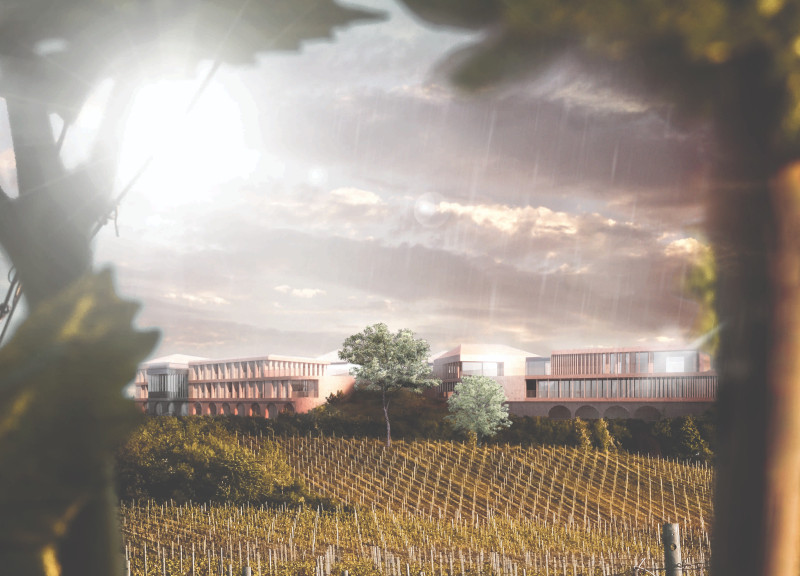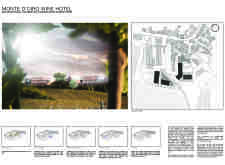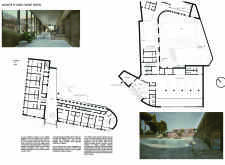5 key facts about this project
The design emphasizes connectivity to the vineyard, featuring public and private outdoor spaces that invite exploration. The layout includes distinct sections for hotel operations, dining experiences, event hosting, and wellness activities. With an approach that balances modern design with regional craftsmanship, the project presents a layered, thoughtfully organized spatial arrangement that optimizes guest engagement with the landscape.
Integration of Nature and Built Elements
One of the notable aspects of the Monte D'Oiro Wine Hotel is its deliberate integration with the landscape. The building’s configuration capitalizes on the topography of the site, employing sloping green roofs that contribute to biodiversity and natural insulation. This sustainable approach aligns with contemporary architectural trends focused on minimizing environmental impact. Natural materials such as concrete, translucent glass, and warm woods are used in the construction to create a tactile relationship with the surroundings, fostering a sense of connection with the vineyard.
The design incorporates large windows and open-air terraces to enhance views and natural light, encouraging outdoor engagement. Unique features, such as the underground tunnel connecting the hotel to the vineyard, allow for an immersive experience, facilitating easy access to viticultural activities while reinforcing the association between hospitality and wine production.
Functional and Aesthetic Considerations
The layout of the Monte D'Oiro Wine Hotel is characterized by a thoughtful distribution of functions that cater to diverse guest needs. The reception area serves as a central hub, granting access to various amenities such as the adaptable event space, dining areas, and wellness facilities. The spatial organization promotes fluid circulation, facilitated further by the inclusion of ramps that ensure accessibility throughout the building.
Design elements such as light wells enhance the interior environments, providing ample daylight while reducing dependency on artificial lighting. This approach not only supports energy efficiency but also contributes to a pleasant atmosphere for guests. By prioritizing user experience and accessibility, the project effectively anticipates the needs of its visitors.
The Monte D'Oiro Wine Hotel stands as a representative model for combining hospitality and architectural design within a vineyard context. It exemplifies how contemporary architectural practices can harmonize with natural landscapes while offering functional versatility. For further insights into this project, including architectural plans and sections, readers are encouraged to explore the detailed presentation of the Monte D'Oiro Wine Hotel to understand its architecture, design ideas, and unique features.


























